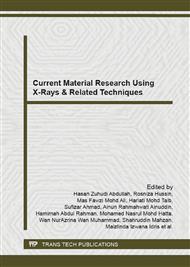p.345
p.350
p.355
p.360
p.365
p.370
p.374
p.379
p.384
Initial Efforts in Modelling Mass Transport in Microdialysis Probes: Physical Characterization of the Microdialysis Probe Membrane
Abstract:
Microdialysis is a popular sampling technique that utilizes a probe, which can be simplified as a membrane attached to a hollow needle. Although well accepted, this technique is hampered by performance issues. Many researchers argued that these issues can be addressed if mass transfer through the membrane is properly evaluated. However, due to the nature of the probe (small in size, fragile, etc.), experimental evaluation is not something typical or straightforward. Mathematical models are seen as a reliable alternative, but the success of building such representative model shall depend on various parameters that need to be identified through characterization. This paper aims to characterize the probe’s membrane using the scanning electron microscope (SEM). It is envisaged that the characterization efforts shall provide necessary information to complement various unknown parameters in the proposed mathematical framework.
Info:
Periodical:
Pages:
365-369
Citation:
Online since:
February 2015
Keywords:
Price:
Сopyright:
© 2015 Trans Tech Publications Ltd. All Rights Reserved
Share:
Citation:


